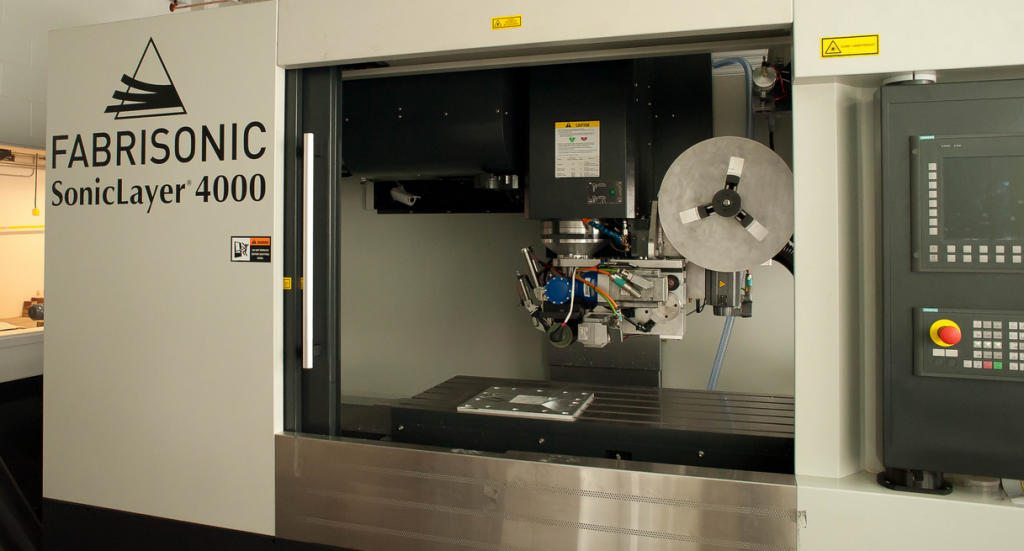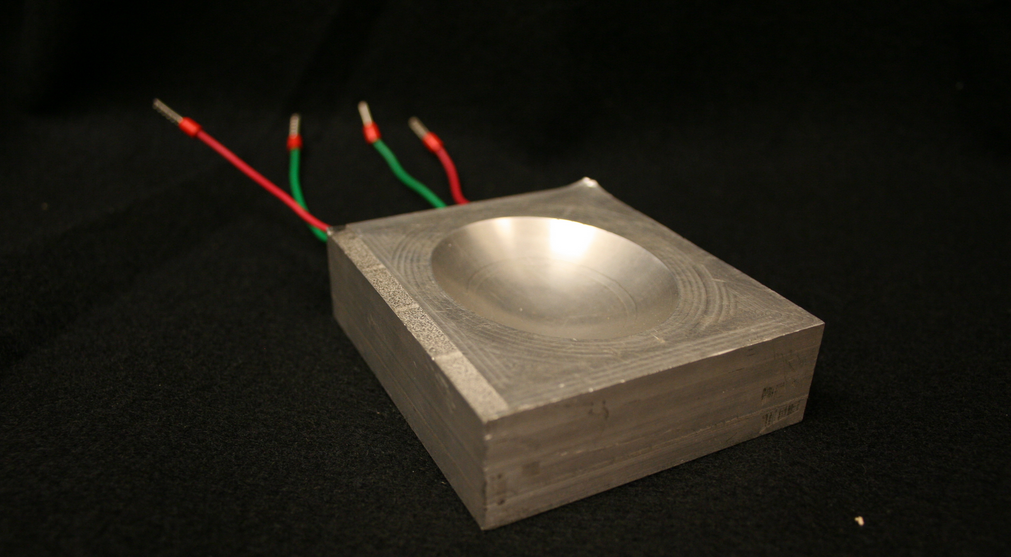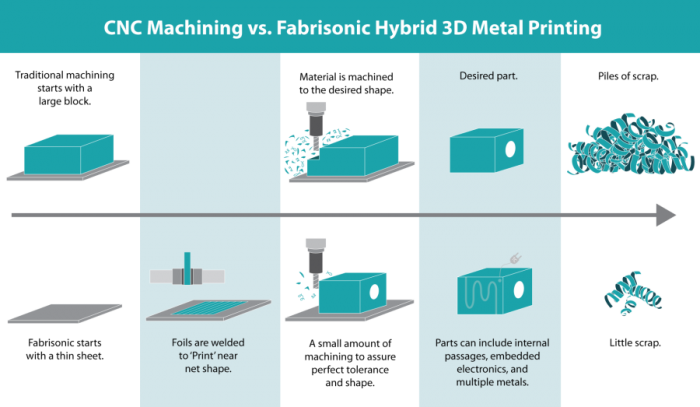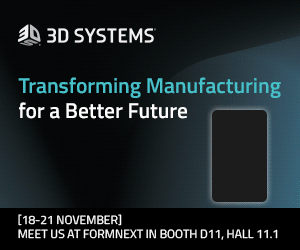Fabrisonic Builds Fully Dense, Complex Metal Parts & Heat Exchanges Via Ultrasonic Additive Manufacturing
Fabrisonic has developed a unique additive manufacturing method which is a sort of hybrid of ultrasonic welding and CNC milling, and the company uses the technology to create complex and detailed full-metal parts which can also include embedded electronics.
Since 2011, Fabrisonic has been producing parts for aerospace, automotive, research, and industrial applications. The process is a relatively high-speed, Ultrasonic Additive Manufacturing (UAM) technique which is capable of making what are called ‘fully-dense’ parts.
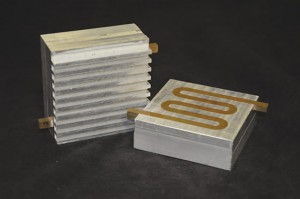 This UAM process uses layers of metal foil and combines them in true metallurgical bonds, and the technique works with copper, stainless steel, aluminum, and titanium. The Fabrisonic method can ‘print’ multiple metals together, and all without unwanted metallurgical changes. The process takes rolls of metal strips to print parts using aluminum and copper which can include highly complex internal channels – arranged in any direction – with a solid-state welding technique.
This UAM process uses layers of metal foil and combines them in true metallurgical bonds, and the technique works with copper, stainless steel, aluminum, and titanium. The Fabrisonic method can ‘print’ multiple metals together, and all without unwanted metallurgical changes. The process takes rolls of metal strips to print parts using aluminum and copper which can include highly complex internal channels – arranged in any direction – with a solid-state welding technique.
The UAM process works like this: solid metal objects are built up via ultrasonically welding a series of metal tapes into a three-dimensional shape while periodic machining operations create the detailed internal shapes of the resultant objects.
Using high frequencies of around 20,000 hertz, ultrasonic vibrations are applied to the metal foil materials which are pressed together under pressure, and that creates a weld. Successive layers are welded together to build up height. The ultrasonic welding process has been around since the 1960s, and the ultrasonic vibrations involved create a ‘friction-like’ relative motion between two surfaces which causes shearing and deformation between the opposing surfaces through the combination of heat and pressure.
Like the 3-axis CNC mills the device is derived from, the welding process can be stopped at any point and three-dimensional channels can be machined. The additive process can then be used to build up metal to seal complex 3D flow paths.
With heat output from electronic devices growing steadily, thermal management components are becoming a key to design concerns. This kind of heat exchanger device was once CNC machined, but machining is limited in its ability to create complex passages and arrays of cross-drilled holes and paths.
Complex internal geometries with metal 3D printing can now be built which are composed of metals and alloys which feature the high thermal conductivity necessary, and copper and aluminum are the materials of choice for their excellent conductivity.
But it may well be the ability of processes like the UAM technique to include embedded electronics which is the most critical. In the UAM process, fiber optics, thermocouples, and circuits can be sandwiched within layers of metals, and by placing a thermocouple inside of a monolithic structure, Fabrisonic could open new paths to design flexibility.
While the design complexity limitations of the UAM technique doesn’t allow for the same sort of freedom that other 3D methods as a CNC milling step is required for each layer, it does open up the possibility of more intricate designs than milling alone provides.
Are you aware of any other novel AM technologies like this UAM process from Fabrisonic? Let us know in the Hybrid AM and Milling Process forum thread on 3DPB.com.
Subscribe to Our Email Newsletter
Stay up-to-date on all the latest news from the 3D printing industry and receive information and offers from third party vendors.
Print Services
Upload your 3D Models and get them printed quickly and efficiently.
You May Also Like
DEFEND3D Founder Barrett Veldsman Explains Why AM is On the Brink of Its Cybersecurity Moment
Cybersecurity has been something of a blind spot for the additive manufacturing (AM) industry. In the second half of this year, this started to change: in September, leading prosumer brand...
Prusa Research Releases New OCL License
Prusa Research has developed a new license, the Open Community License (OCL). A lot of standard open source and other licensing types have not been made with hardware in mind,...
LEAP 71 Successfully Tests Two Fully 3D Printed Methane Rocket Engines in Just Weeks
LEAP 71 has reached a major milestone in space propulsion, successfully hot fire testing two different rocket engines that were designed by software and fully 3D printed. The engines, each...
Prusa Research Crashes Tabletop Gaming
I love it when 3D printing sneaks into places you don’t expect, like an unassuming board game you’d grab for a weekend play session. While not on the same scale...


